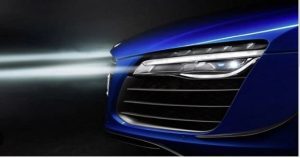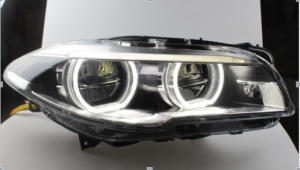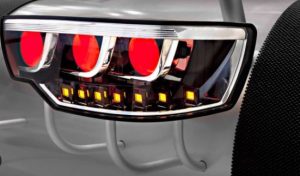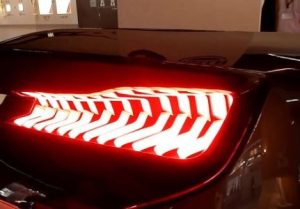A technical revolution that is bringing new technology and conventional vehicle manufacturing together is currently sweeping the automobile industry. Automotive lighting companies are creating new lighting solutions to replace outdated standard lights in response to the growing trend of advanced vehicles. New vehicle models with fine interiors are being introduced by automobile players in the industry.
Automotive lighting covers the front, rear, and sides of an automobile, with some specific functions situated on the top as well. Different lighting roles are defined by legislation in terms of their photometric specifications, position, size, the color of light, and many other factors for the two primary objectives of illumination and signaling.
There have been a lot of important developments in the area of automotive lighting technology since the introduction of headlamps on automobiles. The most recent advancements in car lighting are greatly sought after by drivers for their improved security, style, and look, in addition to just lighting the road in front of you. Statistics indicate that better lighting can significantly lower the number of accidents that occur at night, and this trend is starting to gain traction around the world and is being included in all new vehicles.
The purpose of automotive outside lighting is to maintain road traffic safety. The driver can better see the lane, the road, obstacles, and traffic signs by using the car lights. For this, headlights that have high beam, low beam, and fog light features are typically employed.
Global megatrends are centered on modern automotive lighting. Automobile drivers are increasingly drawn to the latest lighting advancements as technology in this domain develops. The main goals of automotive lighting trends and research are elevated performance, extra security, and a distinctive style.
Here are some trends in automotive lighting that are being incorporated into new and improved automobile models.
Since the invention of halogen, xenon, and LED headlamp technologies, laser light is the ultimate breakthrough in automobile lighting and the next significant step ahead. The design and functionality of headlights have completely new potential thanks to this lighting trend. Today, the brightness is already nearly four times more than an LED. This suggests that future headlights could be considerably smaller without sacrificing light output. The main advantage for drivers is that these lamps will have the greatest range available in any headlight technology at this time. This gives the driver better clarity, which enhances the degree of safe driving. Due to their compact size, laser diodes are extremely phenomenal. The use of laser light will enable headlights to be made considerably smaller and more effective in the future.
Since its debut on the market in 1993, LEDs have been utilized in numerous automobile lighting applications. The car sector is projected to quickly adopt recent LED technology, which is already present in many luxury vehicles. These most recent multi-chip LEDs are independently controlled and can turn on or off depending on the circumstances of the road, the locations of other drivers, and other features of the road, adjusting to the demands of the driver. Using 5-chip adaptive LED technology, light is cast onto items at the border of the road as well as oncoming traffic. ‘Around-the-corner’ lighting is made possible by adaptive headlights, giving drivers time to adjust to potential hazards up ahead. Improved illumination can help make your vehicle safer because 40% of accidents happen at night.
Flexible, intelligent, high-resolution LED headlights can monitor incoming traffic, vehicle speed, the space between vehicles in front of you, and road conditions. These headlights are designed to be flexible, intelligent pixel lights that produce the ideal lighting while driving. Three 1024-pixel LED light spots are found on each headlamp. This aids in illuminating side views and dark regions along the side of the road when navigating bends or travelling straight. The sensors within can detect changes in the state of the road while the adaptable technology illuminates all dark spots on the road. The best aspect is that even when the lights are fully on, this LED lighting design avoids shining on the heads of approaching vehicles, keeping them safe from glare.
The emergence of OLED, or organic light-emitting diodes, technology, is one particularly intriguing evolution. Organic molecules create light in OLEDs. They are more adaptable and thinner than other lighting alternatives because they don’t need a backlight to function. OLEDs function as surface lights, whereas LEDs are point light sources, opening up a whole new range of design options for car lighting. OLEDs are produced into narrow, bendable, transparent sheets by automotive lighting makers. They are perfect for dashboard screens, signal lights, and taillights for automobile interiors.
Flat light sources called Organic Light-Emitting Diodes have the ability to be independently brightened and muted. The fundamental appeal of OLED lighting technology for automobiles is that they don’t require light guides or reflectors and keep their light at any angle. OLEDs are currently employed in the back illumination of automobiles. OLEDs are suitable for both interior and exterior automobile illumination because of their flexibility and lightweight. Manufacturers of automotive lighting must keep up with changes in LED and OLED lighting automation technology in order to remain competitive. When it comes to innovations in the production of automotive lighting design, Innovative Automation is at the forefront.
The Automotive Lighting Market
Since LED lights use less electricity and have a longer lifespan than halogen and HID lights, car makers are very interested in incorporating them into their automobiles. Additionally, LED lights are preferable to all other lighting technologies since they are strong and durable and have high-quality light-emitting diodes.
As shown by studies, the automotive lighting industry is predicted to reach USD 39.77 billion by 2026. New lighting technologies are being developed by the automakers, who are concentrating on the main lighting fixtures like headlights. To stay ahead of the competitors in the market, they are forming alliances.
Future advancements in interior lighting will mostly be motivated by requirements for security, collaboration, convenience, and style. Some of the newest lighting technologies include light projections, smart LEDs, micro-LEDs, smart functional surfaces, laser-based lighting, guiding materials for 3D light patterns on-demand, and area backlighting with hidden-until-lit effects.
Cabin lighting is becoming more common. They mostly consist of reading and dashboard lights. Reading bulbs, atmospheric indoor lighting systems, and roof modules with improved light guiding technology are some examples of interior lights. Adaptive lighting systems are also expanding positively, though their needs are still far lower than those of LED lights.
Conclusion
The automotive lighting market has seen tremendous growth since the introduction of LED headlights in the early 1990s. This surge in automotive lighting, especially energy-efficient light sources, is being driven by increased automobile manufacturing, particularly in the electric and hybrid markets. Advanced automation companies aim for assembling and testing automotive lighting technology, and constantly adapt to the demands and patterns of the industry.
With the growth of opportunities in this field, it is evident that we will have sufficient advanced lighting technology that will not only reduce accidents on roads due to low visibility but will also improve the style quotient of modern automobiles.
by: Shilpa Shukla, Senior Editor, ELE Times














